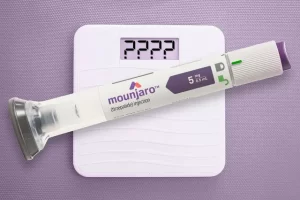What is the Minimum Effective Dose of Metformin?
HOME | DIABETES EDUCATION | WHAT IS THE LOWEST DOSE OF METFORMIN YOU CAN TAKE?
Metformin dosage depends on individual health factors such as age, weight, and kidney function. The lowest effective dose varies for each person to optimize treatment outcomes and reduce side effects. Regular monitoring is essential to maintain the balance between medication effectiveness and safety.
Key Takeaways
- The lowest starting dose of metformin for both adults and pediatric patients aged 10 or older is typically 500 mg daily.
- Factors such as age, weight, kidney function, and individual response can affect metformin dosage.
- Lower starting doses, like 500 mg, allow for gradual dosage adjustment and better tolerance, especially in elderly and debilitated patients.
- Regular monitoring and healthcare provider guidance are crucial when starting on a low dose of metformin to ensure safe and effective use.
Overview of Metformin Dosage
Metformin dosage for optimal diabetes management typically starts at 500 mg once or twice daily for adults. Pediatric patients aged 10 or older usually begin with 500 mg twice daily. Extended-release formulations may start at 500 mg once daily. Dosage adjustments should be made under healthcare provider guidance to achieve the best results with minimal side effects.
Factors Affecting Metformin Dosage
Factors influencing metformin dosage include age, weight, kidney function, and individual response to the medication. The initial dose is typically 500 mg per day but may vary based on specific needs and medical conditions. Starting with a lower dose allows for gradual adjustment and close monitoring of treatment effectiveness. This approach is beneficial for elderly and debilitated patients who may be more sensitive to side effects. It is important to work with a healthcare provider to adjust the dosage according to individual needs and responses for safe and effective metformin use.
Importance of Proper Dosage
Proper metformin dosage is crucial for managing type 2 diabetes effectively and safely. The lowest starting dose for adults is typically 500 mg once or twice daily, which may be adjusted based on individual response and tolerance. Pediatric doses may start at 500 mg orally twice a day for children with type 2 diabetes. It is important to follow your healthcare provider’s instructions on metformin dosage, with regular monitoring and adjustments as needed for optimal treatment outcomes.
Starting Dose of Metformin Tablet
Initiating treatment for type 2 diabetes with metformin involves starting with a 500 mg dose administered once daily for adults. The initial tablet aims to balance efficacy in lowering blood glucose levels with patient tolerance, minimizing adverse effects. The dose may be increased gradually to a maximum of 2000 mg per day based on individual response and tolerability. Adherence to the prescribed metformin regimen is crucial for optimal disease management. Always consult a healthcare provider for the most appropriate metformin dose.
Adjusting Metformin Dosage
The starting dose of metformin is typically 500 mg for adults, with adjustments based on individual response and tolerance. Lower doses may be prescribed initially to minimize side effects, with gradual increments as the body acclimatizes to the drug.
Metformin is an oral medication typically prescribed at daily doses ranging from 500 to 2550 mg. To reduce the risk of experiencing gastrointestinal (GI) upset, it is recommended to administer metformin with a meal. Metformin is available in 2 formulations: immediate-release form, which requires twice-daily dosing, and extended-release form, which requires once-daily dosing. Daily doses of metformin are often titrated weekly in 500 or 850 mg increments to mitigate the risk of adverse effects in patients who are administered the drug. Physicians recommend taking metformin consistently at the same time every day.
Dosage adjustments depend on blood sugar levels, side effects, and overall health status, especially kidney function.
Pediatric Metformin Dosage; Low Blood Sugar
In pediatric care, children aged 10 years and above with type 2 diabetes typically start metformin at 500 mg orally twice a day. Close monitoring is crucial for low blood sugar reactions, and dose adjustments may be needed based on the child’s response to therapy. The goal is to control blood sugar levels effectively while minimizing risks.
Geriatric Metformin Dosage Adjustment
Metformin dosage for geriatric patients should be adjusted cautiously. Typically, these patients start with a lower dose, often 500 mg of metformin once daily. Lower initial doses help reduce the risk of hypoglycemia. Close monitoring is essential to manage potential side effects. Healthcare providers may consider titrating slowly based on the individual’s response to therapy to ensure safe and effective use of metformin in elderly individuals with type 2 diabetes.
Renal Function and Metformin Dosage Form
Renal function determines the right metformin dosage. The estimated glomerular filtration rate (eGFR) is crucial. Metformin should not be used if eGFR is less than 30 mL/min/1.73 m2. Starting metformin with eGFR between 30 to 45 mL/min/1.73 m2 is risky. If eGFR drops below 30 during metformin use, stop the medication. When eGFR is between 30 to 45 during treatment, weigh risks versus benefits. Dose adjustments for metformin are not usually needed if eGFR is above 45.
Weight Considerations for Metformin Dosage
Renal function plays a crucial role in determining the correct dosage of metformin, but weight is also significant. The healthcare provider starts individuals on the lowest dose possible, adjusting based on weight and response to the medication.
- The initial metformin dosage may vary based on weight, with overweight or obese patients possibly needing a higher starting dose.
- Gradual dosage increases help the body adjust, reducing side effect risks.
- Health conditions tied to weight, like cardiovascular disease or hypertension, may influence the appropriate metformin dosage.
Monitoring Side Effects of Metformin
During metformin therapy, monitor for potential side effects even at the lowest dose of 500 mg. Regularly check blood sugar levels and watch for adverse reactions to ensure the starting dose effectively manages the condition.
| Potential Side Effect | Monitoring Method | Action by Healthcare Provider |
|---|---|---|
| Gastrointestinal discomfort | Patient self-report | Adjust dose if necessary |
| Nausea | Patient self-report | Suggest taking with food |
| Diarrhea | Patient self-report | Consider slow-release form |
| Lactic acidosis | Blood tests | Emergency medical attention |
| Hypoglycemia | Blood sugar level | Adjust dose if necessary |
Consult healthcare provider for understanding side effects and necessary metformin adjustments.
Taking Metformin for Other Conditions
Metformin is commonly used at lower doses for conditions like polycystic ovary syndrome (PCOS) and metabolic syndrome. The starting dose for these off-label uses is often around 500 mg daily. Adjusting the dose based on individual response is crucial for optimal outcomes. Consult your healthcare provider for personalized advice on metformin use.
Typical Metformin Dose Allowed; Maximum Daily Dose
The typical starting dose for metformin in managing type 2 diabetes is 500 mg orally twice a day for patients aged 10 years and older. The dose can be increased in 500 mg increments weekly based on tolerance and effectiveness. The maximum daily dose is usually 2000 mg. Metformin should not be used in cirrhosis and should be used cautiously in patients with impaired kidney function. An oral suspension option starts at 500 mg per day and can be adjusted as needed. Regular monitoring is essential for optimal results.
Frequently Asked Questions
What Are the Potential Risks of Taking a Dose of Metformin Lower Than the Prescribed Amount?
Taking a lower dose of metformin can lead to suboptimal blood sugar control, increasing the risk of complications such as heart disease, kidney damage, and vision problems.
Are There Any Dietary Considerations When Taking Metformin?
Dietary considerations while taking Metformin include a balanced diet low in simple sugars and high in fiber to optimize its effectiveness. Excessive alcohol consumption should be avoided to prevent increased side effects of Metformin.
How Does Metformin Interact With Other Medications Commonly Prescribed for Diabetes?
Metformin can interact with sulfonylureas and insulin, potentially increasing the risk of hypoglycemia. Close monitoring is necessary to avoid low blood sugar levels. Individual responses to these interactions can vary, highlighting the importance of personalized medication management under medical supervision.
Can Metformin Be Used in Combination With Insulin Therapy?
Metformin can be used in combination with insulin therapy to control blood sugar levels more effectively in patients with type 2 diabetes.
What Should I Do if I Accidentally Miss a Dose of Metformin?
If missed, take metformin as soon as remember. Skip if close to the next dose. Do not double up. Consult healthcare provider for advice.



